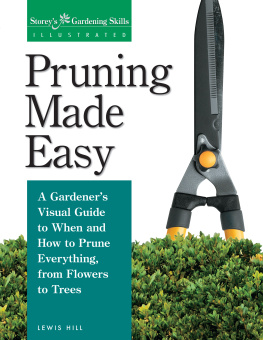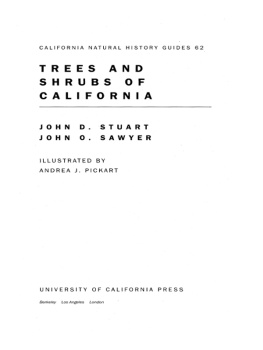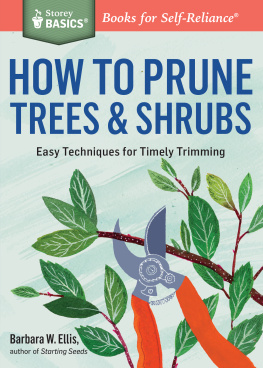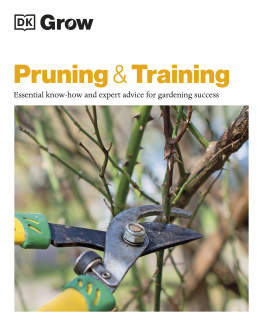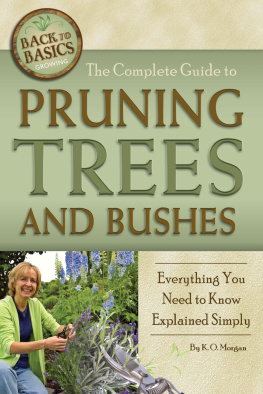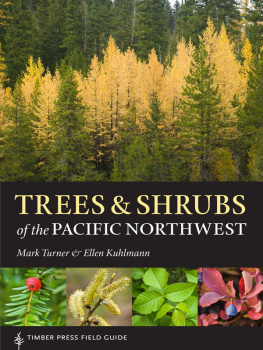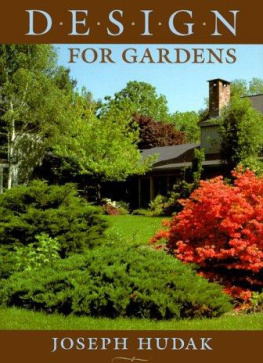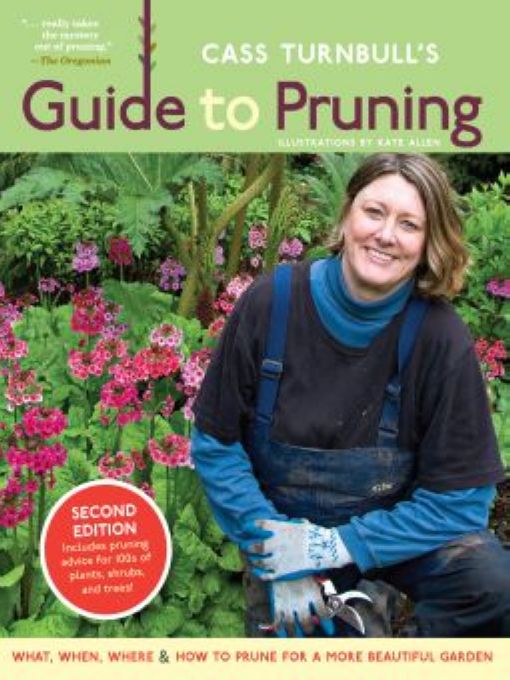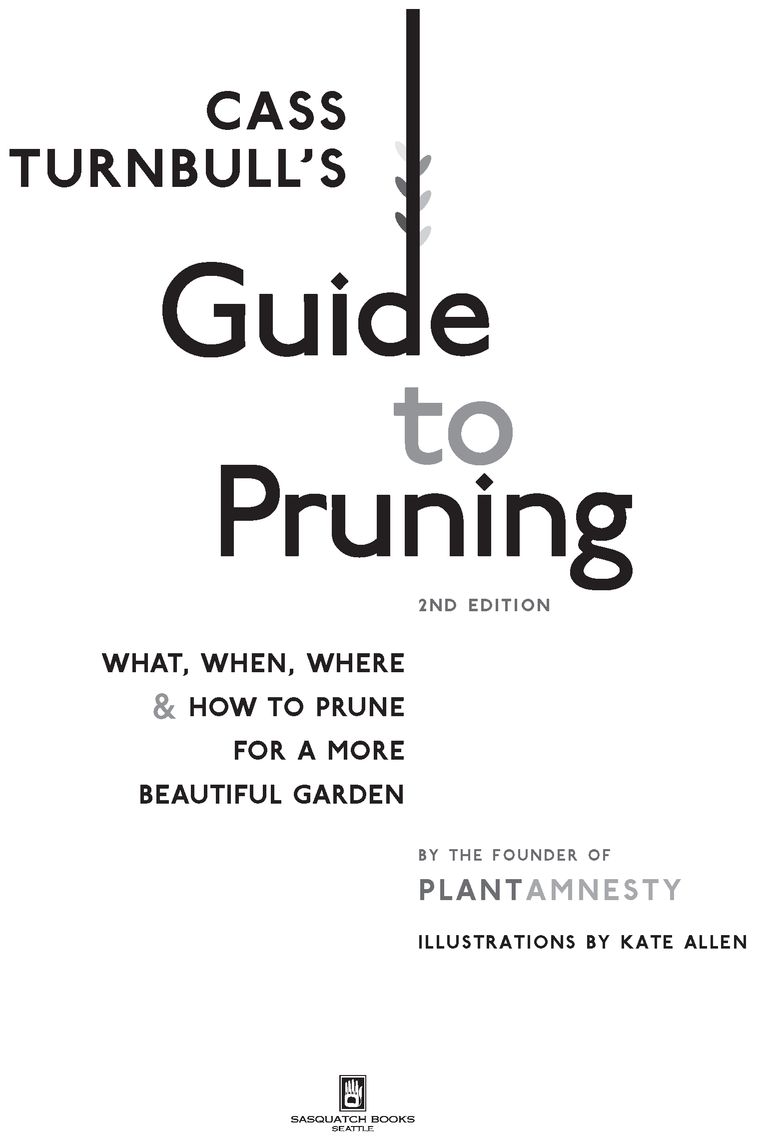Table of Contents
Foreword
I first met Cass Turnbull many years ago at a conference for Women in Horticulture. After I spoke about my experiences as a writer, gardener, and single mom, she walked up to me and said, I thought I wanted to be you when I grew up, but today I realized Im already older than you. I still chuckle over that, and I think Cass has grown up to be Cass, which is an even better plan.
Cass is a remarkable person, a woman of vision and character capable of uniting people of all ages and persuasions into a cohesive action group that has created positive horticultural change. Not only is this an outstanding achievement, but she does this unifying with grace, wit, and sparkling humor. I suspect she learned long ago that you can get people to do just about anything if you can make them laugh first. Its a great lesson, one Ive absorbed as well.
Cass is a passionate person with a serious commitment to plant rights, plant health, and, if such a thing exists, plant happiness. Cass cares what happens to treesall trees, everywhere. Through her teaching, her programs, and her writing, she makes many other people realize how deeply we care as well.
It is a testimony to her persuasive powers that the thousands of people who have been positively influenced through her organization, PlantAmnesty, all regard her with respectful fondness approaching love. They come away from Casss programs with a healthy respect and informed appreciation for trees that changes the way they plant, prune, feed, and water their woodies.
If youve ever been to a Cass Turnbull class, youll never forget the lessons you learned there. If you cant make her classes, or want a deeper, fuller, more explicit understanding of how to prune plants for optimal health, this book is for you. Its a keeper, one youll use over and over, share with friends, and pass on to your kids. In fact, if Cass has her way (which I bet she will), all kids will learn how to prune properly before they get out of high school.
So read this book, not just when you know you need it, but when you have time to ponder. This is great material, presented in a clear unfussy manner thats a pleasure to read. Savor Casss words and thoughts at leisure and your plants will thank you. So will your kids, and their kids, and the generations to come who will love and appreciate the trees we plant, prune, and cherish wisely today.
Ann Lovejoy
Acknowledgments
I must thank my wonderful illustrator, Kate Allen, for the many hours and years she has spent creating a kinder, gentler world for the plants. I know that it is her pictures that will make it possible for the reader to master the mysterious art of pruning. I am equally grateful to Glen Grantham, the illustrator of my first book, The Complete Guide to Landscape Design, Renovation, and Maintenance, who agreed to let Kate redraw his illustrations in her hand for this book. Thank you to Ron Brightman for his editing; to Linda Chalker-Scott, Warren Copes, Ciscoe Morris, and Don Brooks, who all contributed to this new edition; and to Steve Priebe and Donna DiFrancesco, who compiled the plant lists for the Arizona Low Desert section of Appendix 1, Regional Pruning by Plant Habit.
Most of all, I thank my husband, John, for underwriting PlantAmnesty over these many years (without really consenting to it, Im afraid) and for his short-deadline, free editing service and his steadfast love and support.
Introduction
T homas Jefferson said, Though I am an old man, I am but a young gardener. I feel much the same. Ive been a professional gardener for more than twenty years and Im still learning how to prune, observing how each species responds over the course of years. I have taken many classes on pruning and have read many books, but it is only by combining such education with field experience that I have come to know how to prune. I started out wanting to control Nature, bending her to my will with loppers, pruners, and saw. I now believe, instead, that Ive been trained by Nature, in that patient, silent way that she has. Ive come to understand that I must obey her laws if I hope to achieve a modicum of success in pruning and gardening. And only by giving many classes have I learned how to communicate the skill of pruning to others. I think that it is this combination of field experience, academic training, and experience teaching others that uniquely qualifies me to explain pruning to the beginner, both homeowner and professional.
When I was first learning to prune, the books I read were of little help. They showed pictures of shrubs that looked so good I wouldnt have bothered pruning them. I found a lot of information about pruning situations I rarely encountered, like how to fan-prune a peach tree, and yet there was little about my most common pruning problems. For example, people always wanted me to prune the giant rhododendrons that were blocking their windows. The pruning books I read tended to say something utterly unhelpful like requires little pruning. Also, most pruning guides told me that the purpose of pruning was to improve the bloom and health of shrubs. Although I care about these things, what I mostly needed to know was how to make plants smaller.
Nothing about pruning is obvious. In fact, most of it is downright counterintuitive. People try to prune plants the way they cut lumber. But that doesnt work if the goal is a smaller plant. Instead, the plants respond by going into a spasm of regrowth, locking the homeowner into a high-maintenance battle against water sprouts and suckers.
I suspect that soon after man emerged from his cave with the first cutting tool, he whacked a limb off a bush, and it felt good. Bad pruning (what I call mal-pruning) accounts for more than 80 percent of all the work done by homeowners and professionals alike. And this sad state of affairs has persisted for decades. It was as if I were a member in a small secret society of people who somehow knew how to prune. We were doomed to watch helplessly as the rest of the world crashed through the greenscape with tools of destruction in their well-intentioned mission to restore order to their yards. Needless to say, it troubled me that so many plants were being treated exactly opposite of how they should be. People wasted so much time and money, cutting in ways that would eventually make their plants unhealthy, unpretty, unmanageable, and costly to maintain. It was just crazy!
Then one day, as part of a self-actualization seminar, I brainstormed the end of malpruning. In my unbridled imagination the most common forms of mal-pruningtree topping, shrub shearing, and overthinningbecame the topic of newspaper articles and the evening TV news. In the future, everyone would know what a heading cut was, and everyone would know how to prune. Or if not, they would know whom to hire to prune their yards: professionals who really did know how to prune.
Why, there would have to be an organization. It would be called PlantAmnesty, and its mission and first goal would be to end the senseless torture and mutilation of trees and shrubs caused by mal-pruning. The name made me laugh. What started as something of a lark soon got away from me. Eighteen years later our nonprofit group had eight hundred members.
PlantAmnesty has three major goals, the first of which is to alert the public to the crimes against Nature


